#comic book history
Text
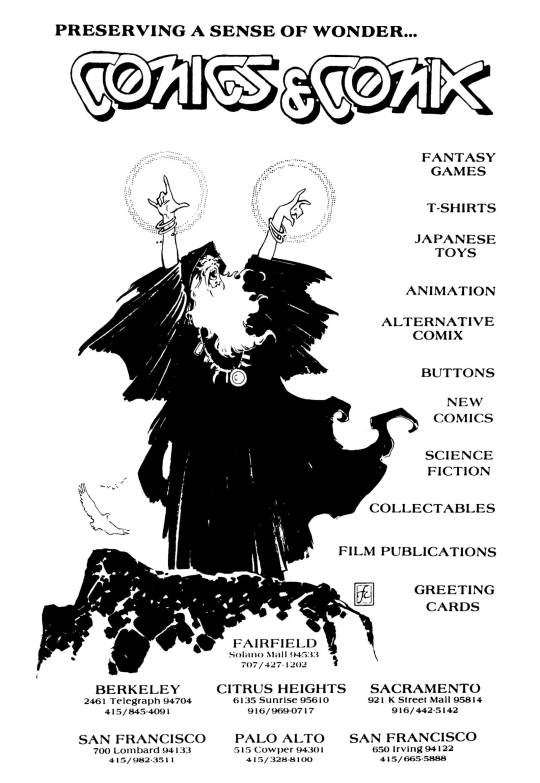
The wizard summons you . . to Comics & Comix's 7 convenient locations. Co-founded by Bud Plant in 1972, C&C was the first comic store chain in the US. The last 2 shops closed in 2004. (Ad in Chaosium's Different Worlds 35, August 1984, with Frank Cirocco art)
#Comics & Comix#Frank Cirocco#Different Worlds#game ad#wizard#1980s#comic books#comics#Bud Plant#California#comic book history
304 notes
·
View notes
Photo



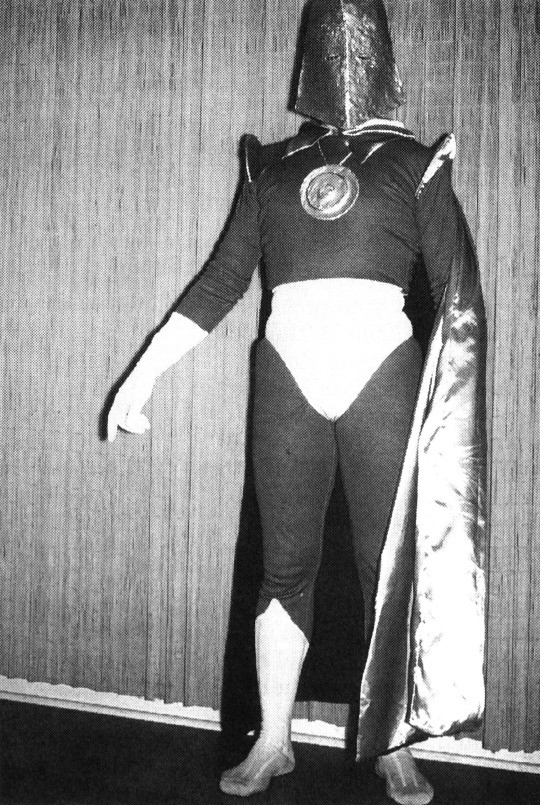

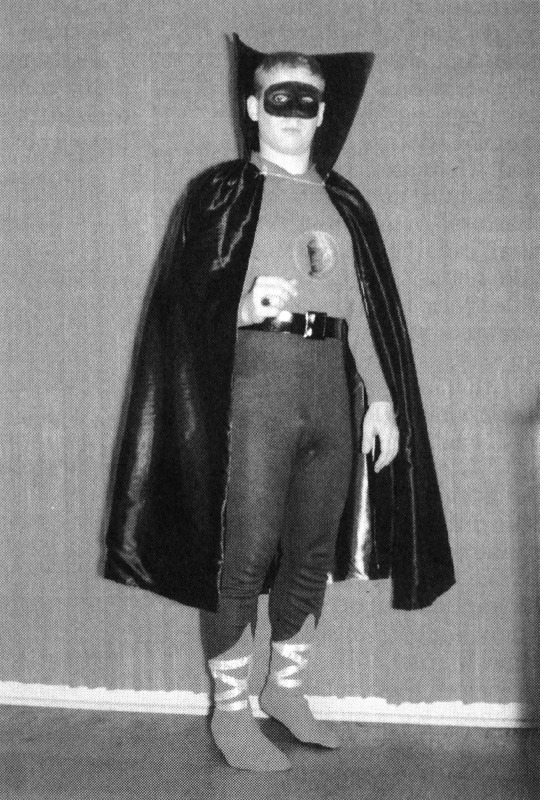
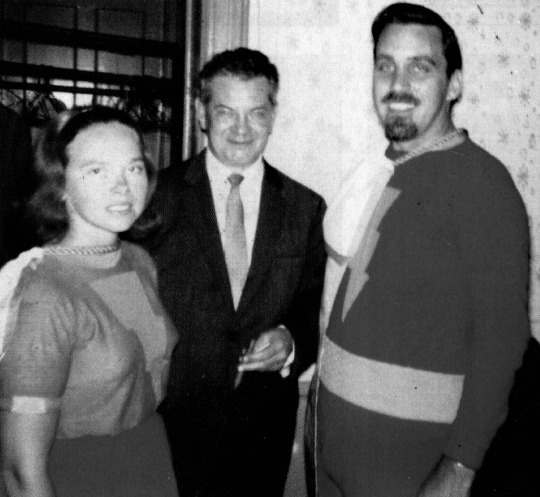



Some highlights of ‘60s & early 70s cons from The Golden Age of Comic Fandom (1999) book. Many of these -- the JSA ones in particular -- were the first cosplays of their kind in recorded history as early fandom was just beginning to take shape and conventions were still considered primarily aimed at science fiction fans. We’ve got:
Dick and Pat Lupoff as Captain Marvel and Mary Marvel at the 1960 World Science Fiction Convention in Pittsburgh, memorably acknowledged as likely the first comic book cosplay in the Xero (1960) #1 fanzine.
Maggie and Don Thompson as Taia and Ibis the Invincible, as well as Larry Ivie and Les Gerber as Batman and Robin, at the 1962 WorldCon in Chicago.
Dian Girard, Bruce Pelz, Fred Patten and Ted Johnstone as Wonder Woman, Doctor Fate, The Flash and Green Lantern also at the 1962 WorldCon in Chicago.
Carol and Phil Seuling as Mary Marvel and Captain Marvel with Otto Binder (co-creator of Supergirl and prolific scripter of Marvel Family stories!) at the 1965 New York Comic Con.
John Clark as The Shadow at the 1970 Phoenix Con, winner of the masquerade ball contest at that same convention.
Bruce Hamilton and Leslie Hamilton as the Joker and Catwoman also at the 1970 Phoenix Con.
Michael T. Gilbert as Green Lantern at the 1971 Comic Art Convention in New York.
For more information on early comic book fandom, you can find a transcript of ‘The Golden Age of Comic Fandom’ panel at the 2000 San Diego Comic Con right here.
#the golden age of comic fandom#comic book history#comic con#cosplay#fawcett comics#dc comics#dc#jsa#justice society of america#captain marvel#mary marvel#ibis the invincible#batman#robin#bruce wayne#dick grayson#wonder woman#doctor fate#the flash#green lantern#diana prince#kent nelson#jay garrick#alan scott#the shadow#the joker#catwoman#selina kyle#hal jordan#u can reblog
562 notes
·
View notes
Text
Harley Quinn's insane popularity during the mid-2010s is a super interesting phenomenon precisely because her abrupt rise in popularity was less about her unique appeal as an individual character and more about everything else DC Comics was doing at the time
Harley's New 52 aesthetic revamp from her classic harlequin costume to a corset, booty shorts, and two-toned hair happened entirely because people loved her look in the Arkham games and DC was trying to capitalize on it. Also almost entirely on the basis of her popularity in those games (and because the company was in desperate need of positive PR after mass criticism about their treatment of female characters in the early New 52, including Harley), editorial greenlit a solo book for her.
Her 2014 solo book outsold most of DC's line partially because of the character, story, and the creative team of course; there's no way it could have been that successful without people liking those things. But its success was massively helped by Harley being one of the few characters who (outside of Glass's Suicide Squad run, which was promptly yeeted into oblivion and never mentioned again) wasn't completely fucked over by the reboot and whose book DC editorial largely left alone during the notoriously micromanaged New 52 era.
She also had one of the few decent "fun" books at a time when DC's offerings were mostly either grimdark and edgy, disliked, or doing something radically different with their protagonists than normal (for example...Lobdell's Teen Titans and Red Hood and the Outlaws, making Supergirl a Red Lantern, and having Dick Grayson fake his death and go undercover as a super spy), making Harley Quinn a breath of fresh air for anyone seeking to escape the melodrama of Forever Evil, Future's End, and Convergence or find a new book after the ones they were reading ended or became unpalatable.
Over in the DCEU, people had two lukewarm movies they weren't really that excited about despite starring DC's Trinity. And then you got Suicide Squad, which was kinda hot garbage and a critical failure but made bank and had the wonderful Margot Robbie playing Harley Quinn. No one else really made it out of that movie looking good, but Margot's depiction of Harley was widely praised and her look in that movie became wildly popular, selling tons of merch. So DC went "oh she's a seller!" and then greenlit the Harley Quinn cartoon and Birds of Prey 2020 while generally refusing to acknowledge that the lack of decent DCEU movies overall, Robbie's performance compared to her co-stars, and Harley's grunge Hot Girl look were the main drivers of Harley's seemingly unique popularity following the movie's release.
Basically: Harley got incredibly lucky because she got a major internal editorial push as a character at the exact same time basically every other character whose comics would have normally outsold hers got fucked over, and then got lucky twice when DC cast Margot Robbie to play her in Suicide Squad while the movie's Hot Topic Aesthetic™ was still somewhat en vogue.
Combine those two things with the fact that her relationship with Poison Ivy (an A-list Batman Rogue) was confirmed at the same time same-sex marriage was legalized and DC was looking to promote a diverse character slate...and you get the wild popularity she's enjoyed since ~2012 that nonetheless is obviously starting to slowly return back to base levels. Which you can tell when you look at, for example, Harley's sales numbers post-Rebirth/Infinite Frontier (since facing actual competition from DC's staple characters) and the number of new Harley-led projects that have been greenlit since the 2020 management massacre that took out Didio.
At the end of the day, The Harley Phenomenon is less about Harley Quinn and more about what happens when a company capitalizes on a character's aesthetic appeal and Cool Girl Status while largely abandoning the goal of making quality content starring the rest of their staple characters. She's certainly popular on her own and has individual appeal, but she never would have achieved the level of mainstream popularity she's enjoyed over the past 10 years without an astounding set of major coincidences all falling in her direction.
393 notes
·
View notes
Text
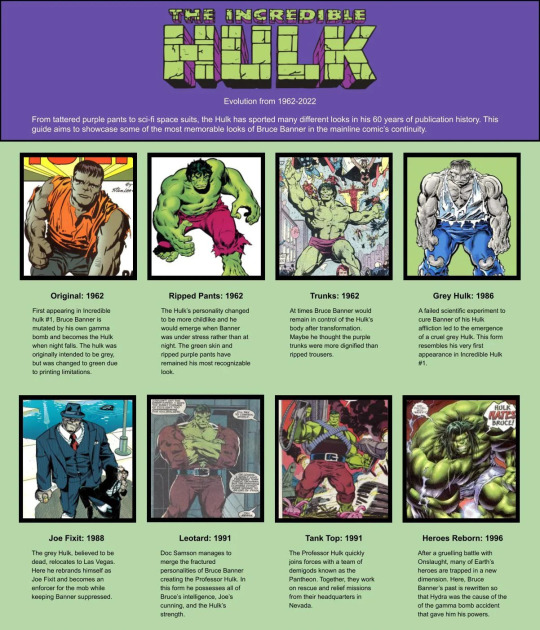
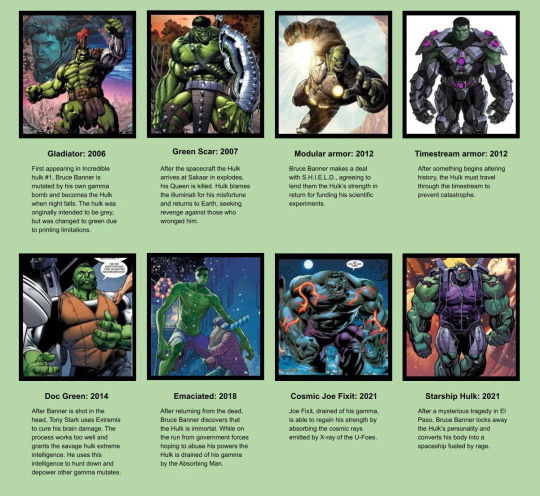
From tattered purple pants to sci-fi space suits, the Hulk has sported many different looks in his 60+ years of publication history. This guide aims to showcase some of the most memorable looks of Bruce Banner in the mainline comic’s continuity! 📅
#fun fact#fun facts#trivia#comics#comic books#marvel#marvel comics#marvel comic books#marvel characters#marvel superheroes#hulk#the hulk#the incredible hulk#bruce banner#infographic#evolution#character evolution#history#comic book history
11 notes
·
View notes
Text
A chapter on the legal attacks on a comic book in Sweden, from an open access book on censorship on JSTOR.
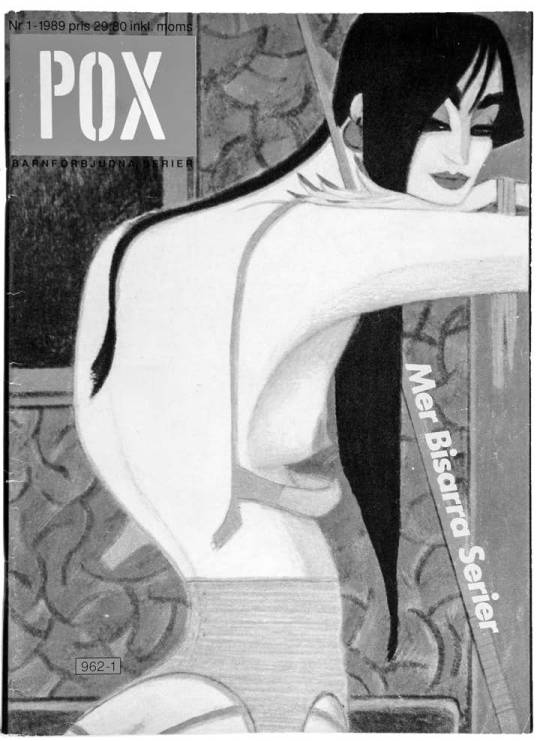
91 notes
·
View notes
Text
In the 90s one of the biggest mysteries in superhero comics was the identity of the X-Traitor. This was someone seemingly responsible for the downfall of the X-Men in Bishop's timeline, someone who betrayed the team and set into motion a terrible future for mutants.
It all kicked off in Uncanny X-Men #287 from early 1992, where we see Bishop and his XSE buddies watching an old fragmented recording of what we're led to believe are Jean Grey's last words.
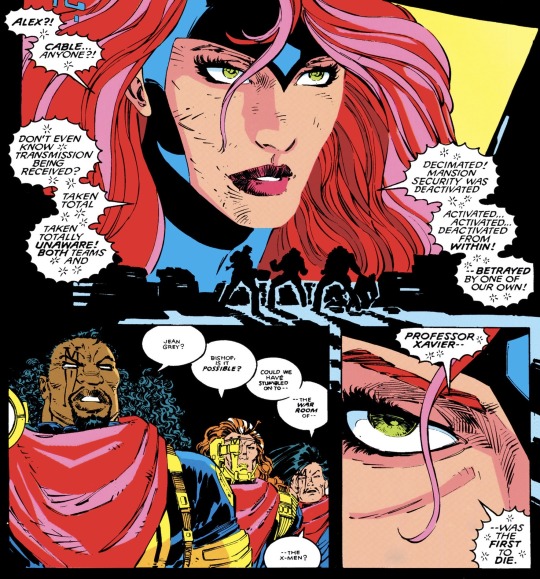

Plenty of hints were dropped as this mystery played out, but it wasn't directly addressed again until over four years later in Onslaught: X-Men #1 from the summer of 1996, where we finally get Jean's full recording at the beginning of the issue.




The reveal hit hard when *nearly 30-year-old spoilers* we learn that the X-Traitor was Xavier all along! Driven mad by shutting down Magneto's mind [re:Avalon] and housing the psyche of his frenemy (or lover, depending on your interpretation) inside his own brain, Xavier and Magneto fuse into a singular being, the titular Onslaught.
And so the dream was dead.
7 notes
·
View notes
Text
Some Comics by Gerard Ashworth (Comics, Gerard Ashworth, various years)
Some comics from the Australian independent cartoonist. You can read them here. Includes some issues of the Sick Puppy comics anthology, and Flayed Intentions, a guide to Australian comics of the early 90's.


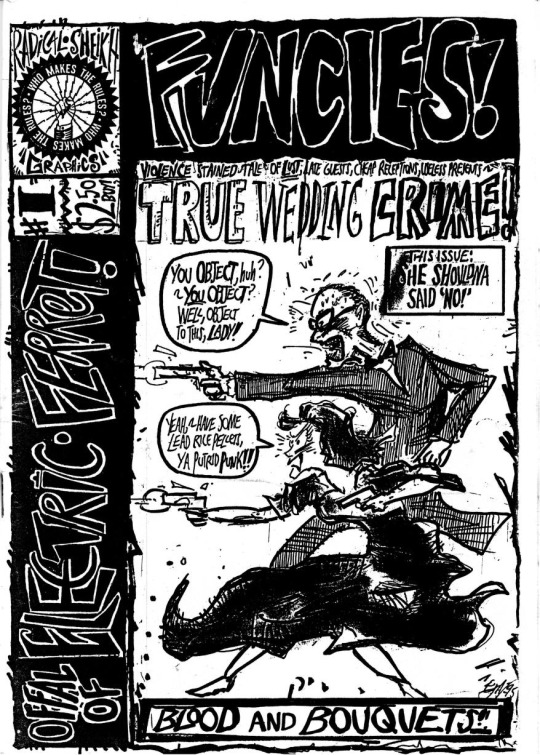

#internet archive#comic#comics#comic book#comic books#comic history#comics history#comic book history#australian comics#indie comics#independent comics#underground comix#comix#australia#philip k. dick#jackson pollock#joe coleman
27 notes
·
View notes
Text
I've been learning more about comic book history. Anyone care for some toxic yaoi from the 1910s? (Krazy Kat by George Harriman)
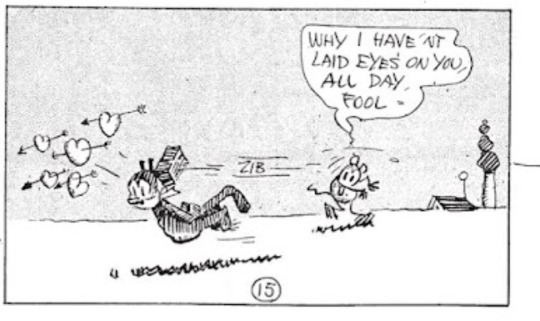
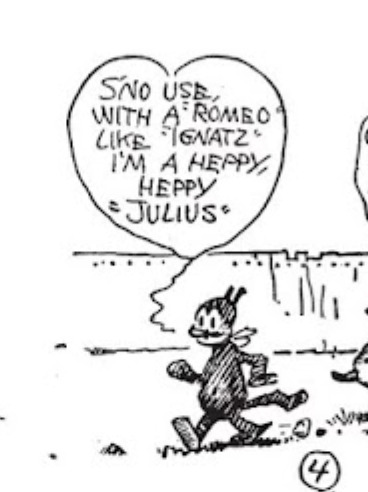
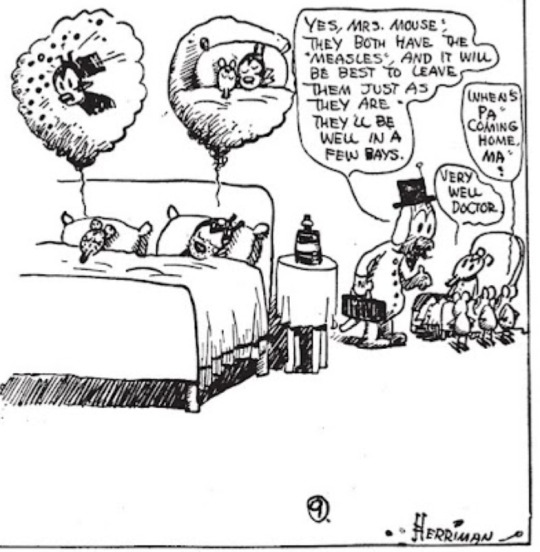

(ok so the cat is gendered male most of the time, but sometimes gendered female and I just wanted to to say that. Yay for a non binary protagonist!)
#Krazy kat#'tis sum krazy stuff I'll tell ya#comic book history#so much interesting things about it#the bizarre morphing liminal desert landscape#the playful spelling and mix of several languages#how the creator had to hide his racial identity
11 notes
·
View notes
Text
I deleted this ask because I'm not interested in engaging with people who aren't reaching out in good faith, but man, people on this site really need to get more comfortable with the fact that historical gay men have long been associated with and explored their own sexuality (in an abstract sense) through fictional characters who are explicitly young and associated with the concept of youth, like Peter Pan, Dorian Gray, the cast of The Wizard of Oz, and, yes, Robin the Boy Wonder.
This is a known Thing in queer literature, people have done papers. And yeah, a bunch of homophobes looked in on that sort of thing from the outside and cried pedophilia, the same way that a bunch of dumbass modern puriteens look in on a whump fic and cry rape apologism or incest or whatever other buzzword they can misuse. Because they're deliberately reading it in bad faith to paint the people who read that material as bad instead of considering where their emotional investment actually lies and what catharsis they're receiving.
With Robin specifically in the 40s and 50s, what few records we have from the time indicate that young, gay boys were projecting onto him specifically because they found themselves attracted to the idealized hyper-masculine presentations of characters like Batman and Superman, and Robin was the focus of Batman's care and attention. He filled the narrative role of "The Beloved," the one that Batman cares for, whose safety can be used to raised the stakes of a scenario -- a role more commonly filled by the hero's opposite-sex love interest, ie, Lois Lane or Steve Trevor. Bruce did occasionally and often save beautiful young women who were in love with him from peril, but at least as often he was rescuing and protecting Robin, and Dick would return the favor.
At a time when homosexuality was pathologized and you just didn't get portrayals of men loving each other openly and fully, it was a central part of the Batman & Robin partnership that they cared for one another, deeply and loyally. And while that bond was neither sexual nor romantic in the comics themselves, it still represented something desirable for young gay boys who didn't have many other fantasies to latch onto.
Which isn't to say that anybody has to start shipping the pairing or anything, it's just, I'm not incline to give up this fascinating intersection of literary analysis and queer history just because some people decided to be squeemish and/or homophobic about it. This was important to people. That means something.
14 notes
·
View notes
Text

excerpt from Otto Binder: The Life and Work of a Comic Book and Science Fiction Visionary by Bill Schelly, quoting from Otto Binder’s unpublished 1948 autobiographical book Memoirs of a Nobody
8 notes
·
View notes
Text

Batman went from being a bootleg Superman to being one of the most culturally impactful characters of all time!
🖤🦇🖤
#history#batman#bill finger#dc comics#bob kane#comic book history#detective comics#1930s#the batman#batman arkhamverse#art history#the dark knight#batman the animated series#batman the telltale series#author#kevin conroy#comics#batman arkham trilogy#adam west#super hero#comic books#writing history#role model#fictional characters#nickys facts
8 notes
·
View notes
Text
Alright yall! First episode is up. Talking Batman and queercoding, plus some Jojo's Bizarre Adventure and Metal Gear Solid for some extra context.
13 notes
·
View notes
Text








The Alex by Darwyn Cooke, a 2007 tribute to legendary cartoonist Alex Toth.
#alex toth#darwyn cooke#comic book history#comicedit#comicsedit#u can reblog#yeah i started weeping. oh my god
13 notes
·
View notes
Text
Honestly if your fave comic book character wasn't trashed in Seduction of the Innocent and subsequently talked about in a major congressional hearing that changed the direction of the entire comic industry I don't want to hear a word about how "iconic" or "well-known" they are lmfao
#that list is 1) Superman 2) Batman 3) Wonder Woman and 4) Robin btw#that's it. those are your options#(to be fair this is DC specific too. Marvel is a different discussion)#seduction of the innocent#dc comics#comic history#comic book history
344 notes
·
View notes
Text

Among the more entertaining and less directly harmful lies in Wertham's Seduction of the Innocent is this head-scratcher. The Blue Beetle is an actual beetle, and is also Superman.
No notes about "Superman knocks them out with his fists, they fall down on the floor," that part's hard to dispute.
#artists on tumblr#illustration#superhero#character design#superheroes#blue beetle#comic book history
9 notes
·
View notes
Text
Black superheroes were “Black in color only,” according to scholar Todd Steven Burroughs... and then came Milestone Comics.
#superheroes#black panther#afrocentrism#afrocentric#milestone comics#marvel comics#black superheroes#jstor#research#jstor daily#comic books#comic book history#comic book movies
88 notes
·
View notes